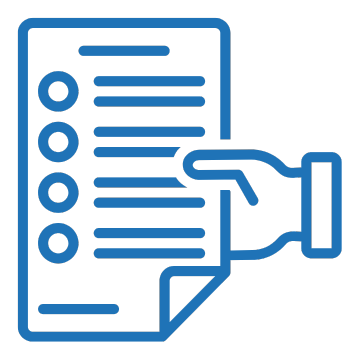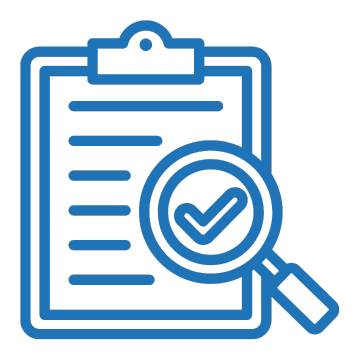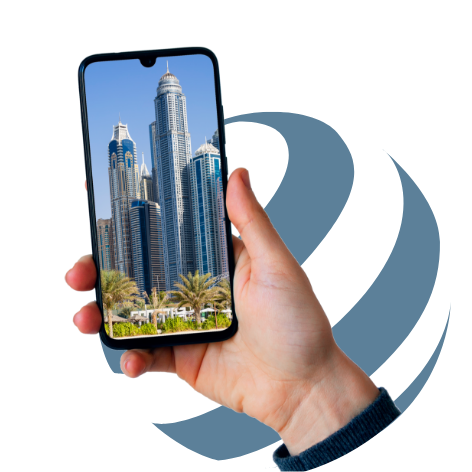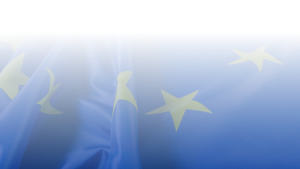Patent Filing in UAE: A Comprehensive Guide to the United Arab Emirates Patent Filing Process
The United Arab Emirates (UAE) stands as one of the Middle East’s most dynamic economies and a rapidly growing center for innovation and technology. Understanding the UAE patent filing process is essential for inventors and companies seeking to protect their inventions in this strategically important market. This comprehensive guide explains how to patent in the UAE, detailing the available forms of protection and outlining the different filing routes, including direct national filings and the PCT national phase in UAE. It also covers the full procedure before the UAE Ministry of Economy, from application to grant, along with examination stages, maintenance, and practical strategies to achieve successful UAE patent registration.

Why It Is Important to File a Patent in UAE
Filing a patent in the United Arab Emirates is not only about legal protection, it is a strategic investment in one of the world’s fastest-growing innovation and business hubs. The UAE’s economy is highly diversified, with thriving sectors in energy, technology, healthcare, renewable resources, and artificial intelligence. Securing patent rights here allows inventors and companies to capitalize on a market known for its rapid adoption of new technologies and strong respect for intellectual property rights.
A UAE patent grants exclusive rights to make, use, and commercialize an invention across the entire country for up to 20 years. This exclusivity is crucial for companies seeking to establish market dominance, attract investors, or license their technologies in the Gulf region. Moreover, the UAE’s central geographic position makes it a gateway to other Middle Eastern and North African markets, giving patent holders a regional advantage.
With the country’s continuous reforms in IP legislation and its commitment to international treaties like the Patent Cooperation Treaty (PCT) and the Paris Convention, foreign inventors can rely on a modern, transparent system that recognizes global standards of protection. The UAE’s robust enforcement mechanisms also ensure that patent owners can take effective legal action against infringement, safeguarding both innovation and commercial interests.
Overview of Patent Types in UAE
The UAE offers three main types of patent protection for inventions: standard patents, utility model certificates, and industrial designs. Each type serves a different purpose depending on the nature and level of inventiveness of the innovation.
1. Standard Patents
This is the conventional patent for inventions that meet the full criteria of novelty, inventive step, and industrial applicability. A standard UAE patent undergoes substantive examination to ensure the invention is genuinely new and non-obvious. If granted, it confers exclusive rights for 20 years from the filing date (UAE GOV). Standard patents are suitable for significant innovations and provide the strongest legal protection.
2. Utility Model Certificates
The UAE’s patent law also provides for utility models which protect “minor inventions” or incremental innovations. The requirements for a utility model are similar to a patent but with a less stringent inventive step criterion (AD IP). Utility model certificates are generally granted faster and at lower cost than standard patents, and their protection period is shorter. In the UAE a utility certificate lasts 10 years from the filing date. However, the trade-off is that the legal strength of a utility model is somewhat weaker than that of a standard patent (AD IP). Utility models are ideal for inventions that are new and industrially applicable but may not reach the high inventive threshold of a patent. They are sometimes informally referred to as “innovation certificates” in the context of minor innovations.
3. Industrial Designs
An industrial design protects the ornamental or aesthetic aspects of a product, whether two-dimensional (like patterns or lines) or three-dimensional (like shape or surface). To be eligible, a design must be novel and must not violate public order or morals. Industrial designs are registered, not substantively examined for functionality, and provide 20 years of protection from the filing date or from the date of international filing (UAE GOV). This protection ensures that the unique visual appearance of products, from packaging to machinery components, cannot be copied without authorization.
Key Insight
The UAE provides a comprehensive range of protection: standard patents for technical inventions, utility models for minor innovations, and industrial designs for aesthetic creations. Together, these categories enable inventors and businesses to secure both functional and visual aspects of their products, reinforcing their competitive edge in the UAE market.
UAE Standard Patent Process Timeline
The lifecycle of a UAE patent begins at the moment of filing with the Ministry of Economy, marking the start of a 20-year protection period. After submission, the application enters the examination and publication phase, which typically spans two to four years. During this stage, the invention is reviewed for novelty and patentability before being officially granted (UAE MOE).

In summary, the UAE patent lifecycle follows a clear path from filing to grant and maintenance, ending with expiration at year 20 when the invention enters the public domain. Consistent management throughout this cycle ensures uninterrupted protection and full commercial benefit.
Patent Filing Routes in UAE: Direct Filing vs PCT National Phase
Inventors and companies looking to file a patent in the UAE have multiple filing routes available to secure patent rights. The choice of route often depends on whether international patent applications are involved and timing considerations. Below are the main routes for UAE patent filing.
1. Direct National Filing or Paris Route
This route involves filing a patent application directly with the UAE Ministry of Economy, and it is often used when claiming priority from an earlier application in another country through the Paris Convention route. If you have filed a patent in your home country, you have 12 months from that earliest filing (priority date) to file a corresponding application in the UAE to claim that priority (UAE GOV). A direct national application is filed in Arabic and must meet all UAE formal requirements at the time of filing.
Notably, no extensions of the 12-month Paris Convention deadline are allowed in the UAE. If you miss this window, you cannot claim the foreign priority and would have to file without it, losing the benefit of the earlier date. Direct filing is suitable for applicants who know from the outset that they want protection in the UAE or for those who did not use the PCT route.
2. PCT National Phase Entry
The UAE is a member of the Patent Cooperation Treaty, allowing applicants to enter the national phase in the UAE through a PCT application. This route is very common for foreign inventors. After filing an international PCT application, the applicant has 30 months from the priority date to apply for a patent in the UAE national phase. This extended timeline, compared to the 12 months via Paris route, gives applicants more time to assess the commercial viability of their invention in the UAE and defer costs.
To enter the national phase in UAE, one must file the required documents with the MOE (including an Arabic translation of the application) before the 30-month deadline. It’s important to note that the 30- month deadline is strict, and no grace period or extension is available for late national phase entries in the UAE. During the national phase entry, you will need to provide the PCT application details (publication number), the International Search Report (ISR), a copy of any amendments (if applicable), and appoint a local agent. Once entered, the PCT national phase application in the UAE is treated much like a regular national application, proceeding to formal examination by the UAE Patent Office.

Key Insight
Patent Filing Process in UAE
Once you have chosen a filing route, it’s important to understand the patent application requirements and the process in the UAE. The UAE patent process involves several stages, from preparing the application with the necessary documents and translations, to undergoing formalities check, substantive examination, and finally grant with publication and maintenance. Below we break down the key requirements and steps.

Required Documents
To obtain a filing date and proceed with a patent application in the UAE, you must submit the following key documents and information:
- Patent Application Form: A request to grant a patent, including applicant’s and inventor’s details (names, addresses, nationalities, etc.).
- Specification and Claims: A complete patent specification document in English and Arabic, including the abstract, detailed description of the invention, claims, and any drawings. Both language versions are required for filing in the UAE. If you initially have the text only in one language, the UAE allows filing with one language and submitting the translation of the specification within 90 days (a late submission fee applies). In practice, many applicants prepare the Arabic translation in advance to avoid delays. The abstract and title must be provided in both English and Arabic at filing.
- Priority Document: If you are claiming priority from an earlier foreign application, a certified copy of the priority document must be submitted. The UAE allows this to be filed within 90 days from the UAE filing date. An Arabic and English translation of the priority document may be required to verify the claims.
- Power of Attorney (POA): For foreign applicants, a notarized Power of Attorney appointing a local UAE patent attorney is mandatory. The POA must be signed by the applicant. Notarization of this document is required. A scanned copy of the notarized POA (in Arabic or bilingual) can be filed initially within 90 days of filing, though the original may be requested later.
- Company Documents: If the applicant is a corporate entity, a notarized copy of the Certificate of Incorporation (or a similar document showing the company’s legal status) along with an Arabic translation may be required within 90 days. This is to prove the legal status of the applicant company.
- PCT Documents (for National Phase): In addition to the above, PCT national phase entries should include the PCT publication number, a copy of the International Search Report and International Preliminary Report on Patentability (IPRP) if available, and details of any amendments filed during the PCT process.

Language and Translations
The official language for patent filings in the UAE is Arabic, but English is also accepted for the patent documentation, which makes the process more accessible to foreign applicants. In practice, patent applications must be filed with an Arabic translation of the specification (title, abstract, description, claims, drawings captions). The UAE Patent Office allows submission of documents in English at the time of filing provided an Arabic translation is supplied within 90 days of the filing date (AD IP). If an applicant files initially with only English documents, they will incur a late submission fee when furnishing the Arabic translation after filing. Therefore, many applicants prepare both English and Arabic versions upfront to file together, ensuring a smooth process.

Request for Examination
After filing, the UAE Patent Office conducts a formalities review. During this stage, the office checks that all required documents are submitted and in proper form. If something is incomplete, the office issues an official action requesting the missing item or correction. Once the application satisfies formal requirements, the Patent Office issues a notice of formal acceptance (UAE MOE). This notice is essentially the green light that the application has met all administrative criteria. Along with the formal acceptance, the office will invite the applicant to pay the substantive examination fee, also known as the request for examination fee. The request for examination must be made within 90 days of the invitation.

Examination
Substantive examination in the UAE is a detailed review of the patent application to verify that the invention meets the requirements of novelty, inventive step, and industrial applicability. Once the examination fee is paid, the application is placed in the examination queue and assigned to qualified examiners at the UAE Patent Office.
During this stage, the examiner issues an examination report outlining any objections, such as lack of novelty or clarity in the claims. The applicant then has the opportunity to respond to these office actions and make amendments if necessary. The UAE Patent Office generally allows up to three or four rounds of responses before reaching a final decision. Each time an office action is issued, an official examination fee must be paid.
The total duration of the examination phase depends on the complexity of the invention and the responsiveness of the applicant. Straightforward applications may be granted more quickly, while those with multiple objections take longer to process.
The UAE also offers Accelerated Examination Options, allowing applicants to shorten the examination period and obtain a faster decision when time is a key factor.

Publication and Opposition
Once the examiner is satisfied that the application meets all patentability requirements, the UAE Patent Office will issue a decision to grant. Before the patent is formally granted, the law provides for the application to be published in the Official Patent Gazette. Upon publication of the notice of allowance, a short opposition period of 2 months is observed. During this time, any interested party may file an opposition (e.g. arguing that the patent should not be granted, perhaps due to prior art). If no opposition is filed within the 2-month window, or if an opposition is filed and then rejected, the patent proceeds to grant.
The applicant is usually required to pay a publication fee for the grant announcement in the gazette, which is an official fee for publishing the patent details. Notably, the UAE does not charge a separate grant fee beyond the publication fee. Once examination fees and publication fees are paid, there’s no additional fee to receive the patent certificate.

Granting and Maintenance
After successful examination and completion of the publication phase, the patent is granted. The Patent Office will issue a patent certificate. Now the patent is in force, retroactive to its filing date, and the owner can exercise exclusive rights. From the grant date onwards, the patent can be enforced against infringers in the UAE courts.
Throughout the process, it’s important to maintain the application by paying annual maintenance fees, which in the UAE fall due even during the pendency of the application.
Key Insight
The UAE patent application process involves careful preparation, followed by a two-stage examination. The Ministry of Economy scrutinizes formalities and then, via cooperation with experienced examiners (e.g., KIPO), ensures the invention meets patentability criteria. Applicants should be prepared to respond to office actions and pay fees timely. On average, one can expect a patent grant in roughly 3–4 years. Diligent compliance with UAE’s filing requirements and proactive follow-up during examination will smooth the path to obtaining a granted patent in this jurisdiction.
Strategies and Recommendations for Patent Filing in UAE
For foreign inventors and companies, the UAE is a popular jurisdiction to include in an international patent strategy due to its robust economy and regional significance. However, foreign applicants should be mindful of certain strategic considerations when filing a patent in UAE.
1. Accelerate the Examination Process
The UAE has introduced measures to expedite patent examination for applicants who need a faster decision. One approach is via a Patent Prosecution Highway (PPH) pilot program. In 2025, the UAE Ministry of Economy signed an agreement with the United States Patent and Trademark Office to recognize positive examination results from the USPTO for corresponding UAE applications. This form of work-sharing can accelerate grant if your invention has already been allowed in the US.
Separately, the UAE also offers an “express examination” service for an extra fee which can fast-track the first examination (UAE MOE).
2. Local Agent Requirement
Foreign applicants must file through a local registered patent agent in the UAE. Unlike some countries where direct filing by a foreign applicant might be possible, UAE law requires that non-residents engage an Emirati patent attorney/agent who is registered with the MOE. This agent will act on your behalf for all dealings with the patent office. As part of this, the Power of Attorney document must be prepared and notarized.
It’s wise to engage a local representative early in the process, as they will provide guidance on document legalization,
translations, and deadlines. Reputable local agents (or services like Patentarea which coordinate with local agents) can greatly smooth the process and will ensure your application meets UAE formalities and will correspond with the MOE examiners in Arabic when needed.
3. Translation and Drafting Strategy
As mentioned, an Arabic translation of the application is mandatory. This means foreign applicants should factor in translation costs and time.
Strategically, one approach is to draft the patent application with UAE in mind from the start. For example, when preparing the PCT application or the original patent text, use clear language and definitions that will be easier to translate into Arabic without ambiguity. Working closely with translators who have technical background can prevent errors. Also, remember that claims must not exceed 50 in number in the UAE (the UAE imposes a cap of 50 claims per patent application). If your original application has more claims, you may need to trim or consolidate claims when filing in UAE to avoid issues.
Key Insight
For foreign applicants, successfully navigating UAE patent registration involves partnering with a local agent, managing translations meticulously, and aligning the UAE filing with your global patent strategy. The PCT route is your friend for flexibility, and new programs like the UAE-US PPH can speed things up. Always keep an eye on the practical aspects, ensuring your patent is maintained, and plan for how it will be used or enforced in the UAE. By being strategic, from filing route to claim amendments, you can secure strong patent protection in the UAE that complements your international IP portfolio and safeguards your innovations in a key market.
Strengthen Your Global IP Strategy with a UAE Patent
Securing a patent in the United Arab Emirates strengthens your global IP portfolio by protecting your innovation in one of the Middle East’s most advanced and business-friendly markets. A UAE patent provides 20 years of exclusive rights, strong enforcement mechanisms, and access to a region with high innovation investment and strategic trade importance. Including the UAE in your international filings enhances your commercial reach, investor confidence, and competitive advantage across the Gulf region.
In short, a UAE patent is more than local protection, it’s a strategic asset that reinforces global patent coverage and positions your invention for long-term success in a rapidly growing innovation hub.

Get your Patent Filed in UAE
Contact us today for a free consultation
References
- Government of the United Arab Emirates. Federal Law on the Regulation and Protection of Industrial Property Rights. Available here. (Reviewed on October 2025)
- Government of the United Arab Emirates. Intellectual Property. Available here. (Reviewed on October 2025)
- United Arab Emirates Ministry of Economy & Tourism (MOE). Register Patents. Available here. (Reviewed on October 2025)
- United Arab Emirates Ministry of Economy & Tourism (MOE). Registering a Utility Model. Available here. (Reviewed on October 2025)
- Abu Dhabi Intellectual Property Unit (AD IP). What is a utility certificate? Available here. (Reviewed on October 2025)
- Abu Dhabi Intellectual Property Unit (AD IP). Registering IP: Patent Guide. Available here. (Reviewed on October 2025)
- Abu Dhabi Intellectual Property Unit (AD IP). Understanding IP. Available here. (Reviewed on October 2025)



